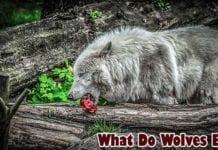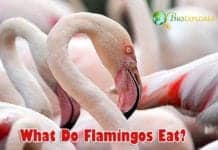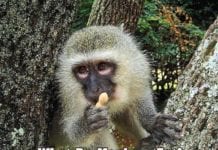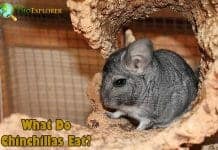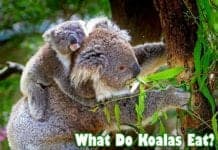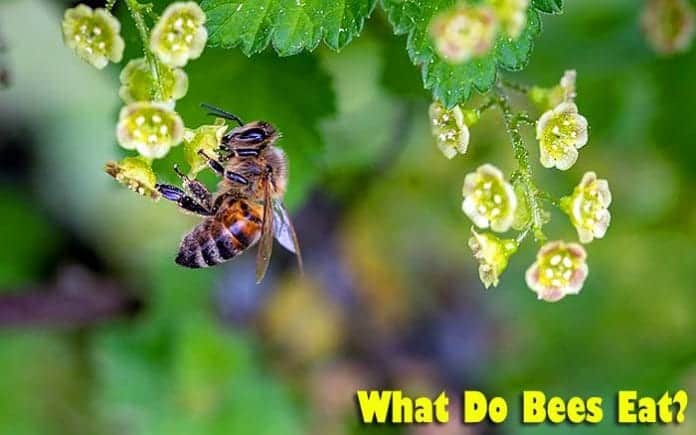
What Do Bees Eat? Bees are flying insects, and they belong to the vastest insect order, which also includes ants and wasps. Most bees (with the example of the honey bees) are herbivores, feeding on pollen and nectar from flowers.
Few species, with the example of the necrophagous bee (Trigona hypogea), display predatory behavior meaning they feed on animal protein drawn from both corpses and live prey.
Table of Contents
What Do Bees Eat?
| Honey Bee | Flowering plants and honey. |
| Plasterer Bee | Nectar and pollen |
| Hawaiian Yellow-faced Bee | Nectar and pollen |
| Mining Bee | Pollen, especially from the Brassicaceae plant family |
| Green Sweat Bee | Nectar and pollen from a vast range of flowers |
![]()
Bees Diet By Types
Scientists have described over 20,000 bee species. These are further categorized into 9 families. Examples drawn from some of these families will be used as the basis for understanding the different types of bees that exist.
What Do Honey Bees Eat?
| Animalia | Hymenoptera | Apidae | Apis | Apis mellifera |
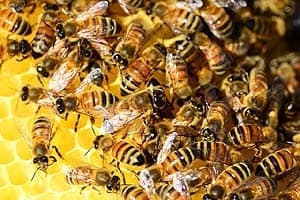 Honey bees feed on nectar and pollen obtained from flowering plants, as well as honey.
Honey bees feed on nectar and pollen obtained from flowering plants, as well as honey.
- This type of bee is native to Africa, Europe, and Western Asia.
- The honey bee likes habitats characterized by an abundance of flowering plants.
- Such habitats would be open wooded areas, gardens, and meadows.
![]()
What Do Masked Bees Eat?
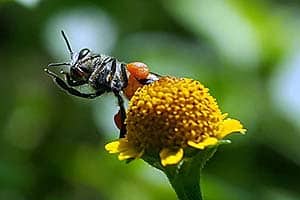 Generally, masked bees feed on flower buds containing pollen.
Generally, masked bees feed on flower buds containing pollen.
- This type of bee gets its name from the yellow or white markings on its face.
- The masked bee inhabits urban areas, heath, forests, and woodlands.
![]()
What Do Plasterer Bees Eat?
| Animalia | Hymenoptera | Colletidae | Colletes | Colletes daviesanus |
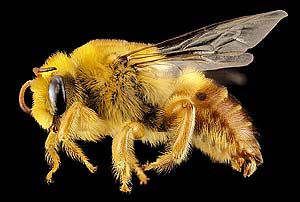 Plasterer bees (Colletes daviesanus) visit flowers to feed on nectar and pollen.
Plasterer bees (Colletes daviesanus) visit flowers to feed on nectar and pollen.
- This type of bee has a wide distribution throughout the UK.
- This bee inhabits areas with flowers.
![]()
What Do Hawaiian Yellow-faced Bees Eat?
| Animalia | Hymenoptera | Colletidae | Hylaeus | Hylaeus kuakea |
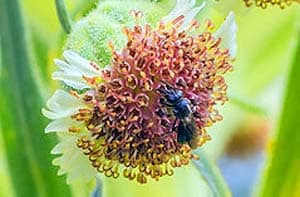 Hawaiian Yellow-faced (Hylaeus kuakea) feed on pollen and nectar, and so they rely on a diversity of flowering plants.
Hawaiian Yellow-faced (Hylaeus kuakea) feed on pollen and nectar, and so they rely on a diversity of flowering plants.
- This type of bee can be found on diverse habitats of the Hawaiian Islands.
- For instance, it can be found in shrublands, dry and wet forests, and along the coastlines.
![]()
What Do Mining Bees Eat?
| Animalia | Hymenoptera | Andrenidae | Andrena | Andrena agilissima |
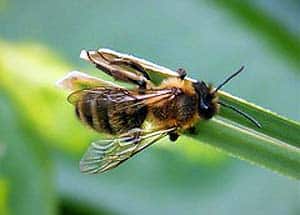 Mining bees (Andrena agilissima) collect and feeds on pollen, especially from the Brassicaceae plant family.
Mining bees (Andrena agilissima) collect and feeds on pollen, especially from the Brassicaceae plant family.
- This type of bee is also referred to as the mining bee.
- It inhabits coastal grasslands and dunes.
![]()
What Do Green Sweat Bees Eat?
| Animalia | Hymenoptera | Halictidae | Agapostemon | Agapostemon texanus |
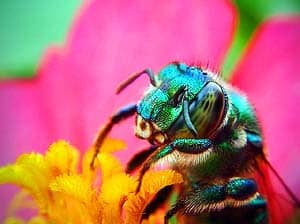 Green Sweat Bee (aka Halictid Bee) gathers nectar and pollen from a vast range of flowers as long as their tongues can access.
Green Sweat Bee (aka Halictid Bee) gathers nectar and pollen from a vast range of flowers as long as their tongues can access.
- This type of bee can be found in wide distribution in Southern Canada.
- The green sweat bee occurs anywhere as long as there is a plentiful supply of pollen and nectar.
- Its nesting habitat is one with bare soil and where the ground is either sloping or flat.
![]()
How Do Bees Hunt?
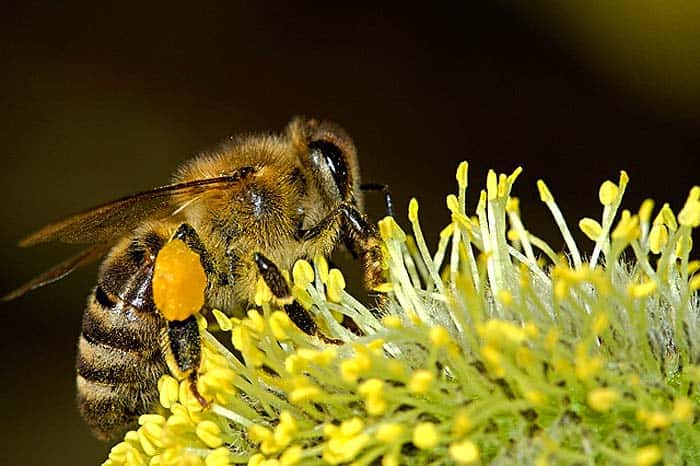
Most bee species feed on pollen and nectar. A few notable examples, like the Trigona hypogea, are carnivorous.
- This bee’s hunting behavior is interesting. The Trigona hypogea have been noted by scientists to use the raiding technique to ambush its prey.
- The Trigona hypogea raid wasps’ nests within a short time and further emerges with wasps, pupa, larvae and their eggs. This bee has also been noted to carry toads‘ eggs back to their nests, possibly with the use of the raiding technique.
![]()
When Do Bees Eat?
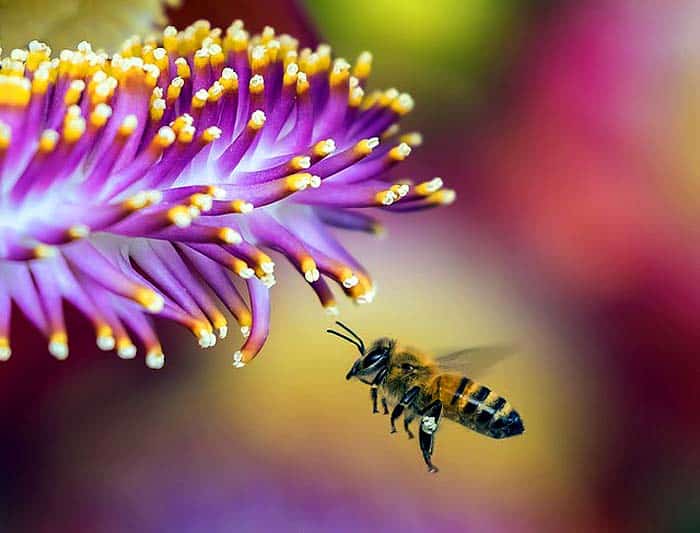
Most bees, including the honey bee, look for food during daylight hours, and this means they will tend to top eat during the day.
- Other bee species are nocturnal like the giant Indian carpenter bee forage and eat in the dark of the night.
- Other bee species are crepuscular.
![]()
How Often Do Bees Eat?
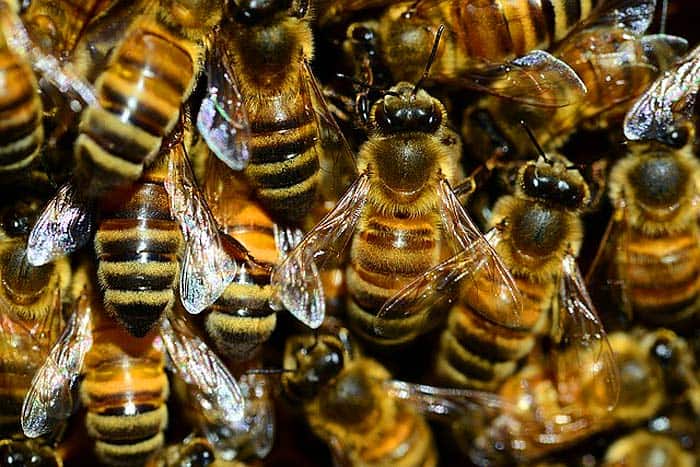
How often bees eat depends on several factors.
- For instance, the Africanized honey bees feed more because when compared to their European counterparts.
- They forage more, and they require more protein necessary to produce more bees.
- The worker bees look for food from flowers, and they consume as much nectar as they can from them.
- Queen bees feed on the royal jelly as often to lay eggs. This extra eating also results in them becoming twice their size.
![]()
What Eats Bees?
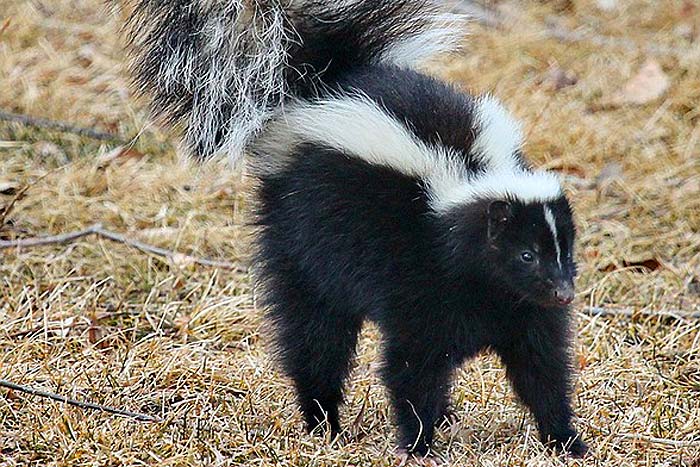
Bees have natural enemies, and examples of these predators include but are not limited to skunks, hive beetles, bears, raccoons, and opossums.
![]()
Where Do Bees Fit in the Animal Food Chain?
Bees have a vital role to play in the animal food chain. They provide food to organisms that feed on them in their natural environment.
- Bees are a food source to small and large mammals, reptiles, insects, and birds.
- Bees are excellent pollinators, and because of this, they help sustain humans and other animals.
- Further, bees, especially the predatory species, help maintain a healthy ecosystem by feeding on live organisms as well as eggs, thus preventing overpopulation.
![]()
Cite This Page
Key References
- “Bees – Key Facts, Information & Pictures”. Accessed July 14, 2019. Link.
- “herbivore | National Geographic Society”. Accessed July 14, 2019. Link.
- “Predatory behavior in a necrophagous bee Trigona hypogea (Hymenoptera; Apidae, Meliponini). – PubMed – NCBI”. Accessed July 14, 2019. Link.
- “ADW: Apis mellifera: INFORMATION”. Accessed July 14, 2019. Link.
- “Masked bees – The Australian Museum”. Accessed July 14, 2019. Link.
- “Colletes daviesanus | NatureSpot”. Accessed July 14, 2019. Link.
- “7 bee species have been added to the US endangered species list”. Accessed July 14, 2019. Link.
- “Hawaii Volcanoes National Park | Flickr”. Accessed July 14, 2019. Link.
- “Andrena agilissima (Scopoli, 1770) | BWARS”. Accessed July 14, 2019. Link.
- “gailhampshire | Flickr”. Accessed July 14, 2019. Link.
- “Canadian Wildlife Federation: Green Sweat Bee”. Accessed July 14, 2019. Link.
- “(PDF) Predatory behavior in a necrophagous bee Trigona hypogea (Hymenoptera; Apidae, Meliponini)”. Accessed July 14, 2019. Link.
- “Nocturnal bees (PDF)” – Cell.com. Accessed July 14, 2019. Link.
- “What Are Some Predators of the Honeybee? | Sciencing”. Accessed July 14, 2019. Link.
- “What are pollinators and why do we need them? — Center for Pollinator Research — Penn State University”. Accessed July 14, 2019. Link.


